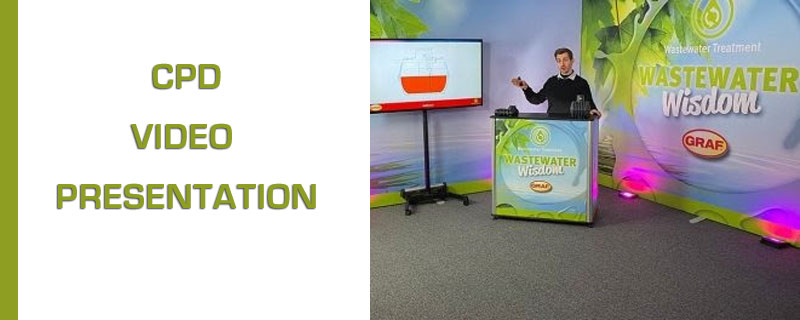New wastewater treatment CPD launched by Graf UK
CPD presentation by Graf UK delivers the ultimate in wastewater wisdom
A CPD that explains the issues around wastewater treatment and advises on the options available for specifiers has been launched by Graf UK.
The 50-minute presentation delivers a multitude of “Wastewater wisdom”, ranging from the fundamentals (what is wastewater treatment and why is it required) to the latest regulations and issues, via a user-friendly mix of “live” presentation and videos.
Graf UK’s new CPD explains the differences between cesspools, septic tanks and wastewater treatment plants, then goes on to detail, and demo, advanced wastewater systems for optimum treatment, such as SBR (Sequence Batch Reactor) systems which are capable of cleaning wastewater to 98% in just six hours.
It also explains the pollution strength of sewage and how Graf systems are capable of reducing the average levels of BOD (Biochemical Oxygen Demand – the amount of oxygen that microorganisms/bacteria require to break down organic matter) from 300-400mg/l to just seven, suspended solids from 200-300mg/l to 14mg/l, and ammonia (nitrogen compound) from 60-80mg/l to 0.5mg/l.
CLICK HERE to watch the full CPD
As well as providing guidance for calculating sewage treatment system sizes depending on the population and type of building, the CPD also explains processes including de-nitrification, disinfection, phosphate removal and carbon dosing. This latter process helps housing developments deal efficiently with sewage underload as their population increases.
Graf UK’s new CPD features a video explaining the new General Binding Rules under which anyone with a septic tank discharging into a watercourse must have plans in place to replace it or upgrade the foul water solution within a reasonable timescale, typically 12 months, or sooner if the property is sold before this date.
It also explains how the impact of nutrient neutrality is making its way north from the south-west of England, where Natural England is clamping down on developments in the Solent area until such time as they can prove they are nutrient neutral.
Build-up of nitrates and phosphates produced from housing developments increases the production of algae and subsequently reduces oxygen levels in rivers and lakes.
The CPD explains that while manufacturers can help specifiers design a solution to redress the balance of nature, only those with European expertise are best placed to do so as the UK does not have the historical data that mainland Europe does in this instance.
Graf UK’s new CPD concludes with the case study of a family attraction in a SPA (Special Protection Area) in Scotland that required a new sewage treatment solution that SEPA (the Scottish Environment Protection Agency) required to deliver phosphate levels of 2mg/l, and 0.2mg/l.









Leave a Reply
Want to join the discussion?Feel free to contribute!